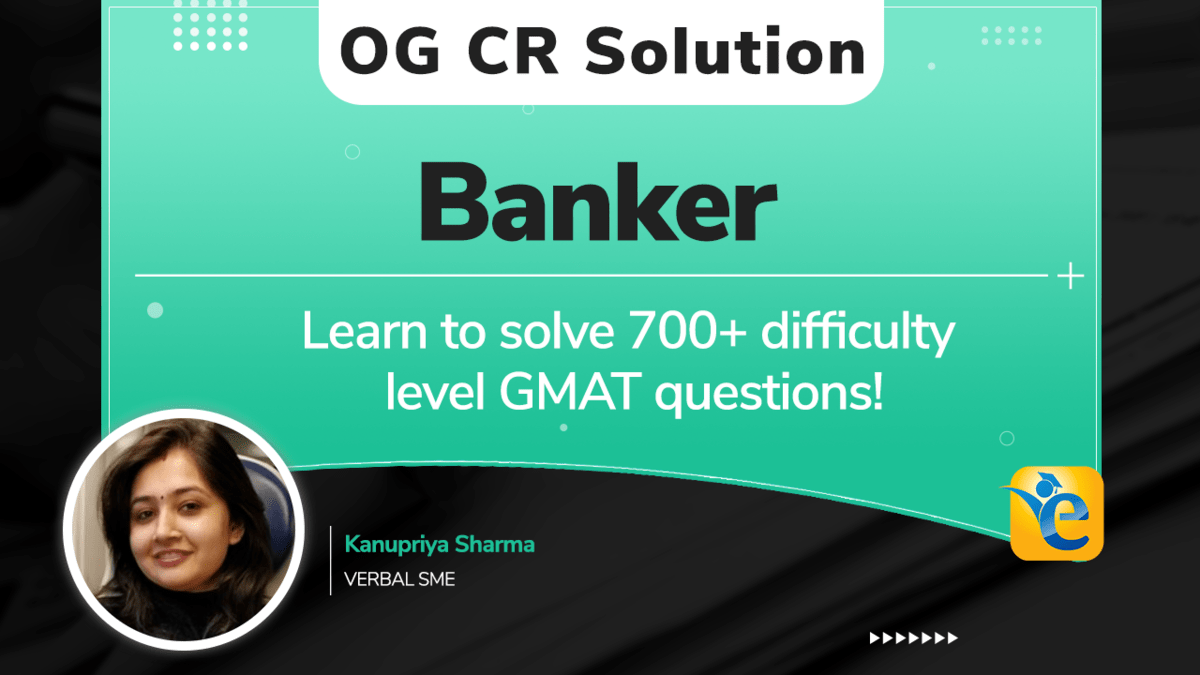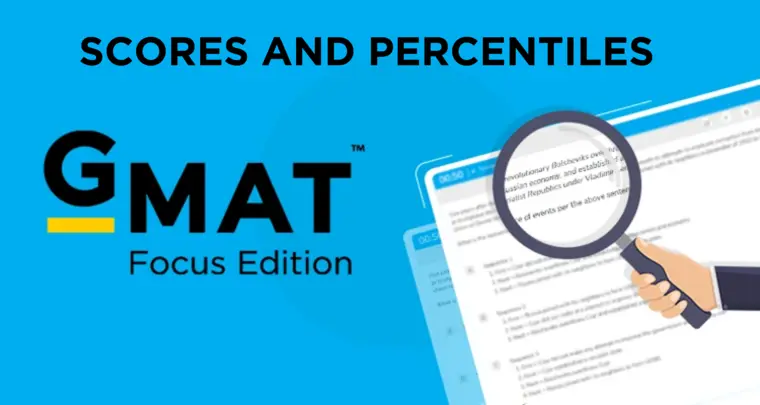In this article, we’ll look at the solution to this Official Guide (OG) question CR53870.01 – “Banker: My country’s laws..” on Critical Reasoning:
CR53870.01 – Banker: My country’s laws require every bank to invest in its local community by lending money to local businesses, providing mortgages for local home purchases, and so forth. This is intended to revitalize impoverished local communities. But it is clear that the law will soon entirely cease to serve its intended purpose. An increasing number of banks incorporated in our country exist solely on the Internet and are not physically located in any specific community.
The banker’s argument is most vulnerable to criticism on which of the following grounds?
[Refer to GMAT Official Guide for options]
Here is some general information about this OG question:
- PQID: CR53870.01
- Difficulty Level: Hard
- Most Common Incorrect option choice: Choice C and Choice D
- Question Type: Flaw
OG Video Solution – CR53870.01 – Banker: My Country’s laws require..
OG Solution – CR53870.01 – Banker: My country’s laws require every bank to invest…
Hi Student,
Are you still trapped in choices C and D?
This is a question in which the correct answer choice is so easy to understand, just that it has been placed at the end, and you need to cross the hurdles of choice C and choice D to even get to it.
So, this question becomes hard because many students give up on choice C or choice D, and those brave hearts that get to choice E end up spending a lot of time on this question.
So, what is the path forward? How would we know where to spend time and where not to spend time? What if one of choices C and D was the correct choice? If you too have such questions, this article is for you.
While there are no shortcuts to any correct answer, and this question is no different, you can change your strategy at times. We’ll see how. However, this change cannot in any way mean skipping any part of the process or skipping the analysis of any portion of the question before marking the correct answer choice. Additionally, it is important to understand each and every incorrect answer choice before rejecting it. If you solve any such question in your preparation stage, do verify your analysis for the incorrect choices, so you know if you rejected them for the correct reasons.
Let’s start by simplifying the most popular incorrect answer choices-
Choice C
Let’s apply our strategic pausing technique to simplify this confusing choice.
- It confuses a condition that would, if present, be likely to produce a given effect,
As per this choice, the argument confuses some conditions.
The first is condition C1 which actually may not be present. However, if this condition is present, it will most probably result in a given effect E1.
- with a condition that would probably be the cause if that effect were present.
The second condition C2 that would be considered the reason behind an effect- if that effect E1 is present. So, in this case, the effect actually may not be present.
So, as per this choice, the argument confuses between these two conditions C1 and C2 where-
C1, if present, will lead to E1
C2 will be considered the cause of E1, if E1 is present.
Now, as per the argument, we have one cause and effect- the law will cease to serve its intended purpose (effect) because of the increasing number of online banks (cause)- and there is no confusion between this cause and effect.
Thus, by simplifying choice C, we understood that it is completely irrelevant and can be rejected.
PS- Applying strategic pausing to understand complex answer choices is the key to understanding these statements without spending too much time. Hence, don’t shy away from doing that.
Choice D
Another complex choice! Let’s apply strategic pausing again:
- It overlooks the possibility that
As per this choice, the passage does not consider a possibility.
- even if there is a strong correlation between two phenomena,
What is the possibility- that even if phenomenon P1 and P2 have a strong correlation
- neither of those phenomena is necessarily causally responsible for the other.
They need not be causally related.
In simple words, if P1 and P2 are two phenomena, and they are strongly correlated, i.e., even if most of the times P1 and P2 occur together, we cannot say that there is a cause and effect relationship between the two.
However, the passage does not mention any set of strongly correlated events. It talks about a causality and gives his reasoning for the same. There is no context to consider these two events to be strongly correlated. Hence, a confusion between strong correlation and causality is out of scope.
Process For This Question
Now that we know what choices C and D mean and how they can be simplified let’s understand how we can save some time in such questions. The process that I would recommend is:
1. Start with understanding the passage.
2. Prethink what the correct answer should look like.
3. Analyze answer choices and eliminate each incorrect answer choice on solid grounds.
Wait! How is it different?
Here is the twist- The process remains more or less the same except that while analyzing answer choices, you can keep the complex answer choices C and D on hold and come back to them after analyzing other answer choices. In this question, you will be able to easily reject choice A and choice B. You will not find any reason to eliminate choice E. So, before you come to choice C and choice D, you will know that most likely choice E will be the correct answer. You will just have to see if choices C and D can be rejected on solid grounds.
There can be a question in which, let’s say, such a complex choice like choice D is correct. Will this twist in process help there? Definitely! Now, you will be able to eliminate choices A, B, and E on solid grounds. So, one out of choice C and choice D is your correct answer.
This twist will help you be more confident while marking answers and save you from getting trapped in the complexities of choices C and D.
Takeaway – Banker: My country’s laws require every bank to invest…
- The 3-step process works for every question. It lets you mark the correct answer choice with confidence.
- In order to understand the complex answer choices, apply strategic pausing.
- Do not skip analysis of any answer choice. At the same time, do not get overwhelmed by any answer choice.
If you want to solve more questions that give you complex answer choices, try these out:
Happy learning!
Kanupriya
Planning to take the GMAT? We can give you access to quality online content to prepare. We are the most reviewed GMAT prep company on the GMAT club with more than 2300+ reviews and have delivered 10x 700+ scores than the average GMATClub partner. Why don’t you take a free trial and judge it for yourself? Write to us at acethegmat@e-gmat.com in case of any queries.















